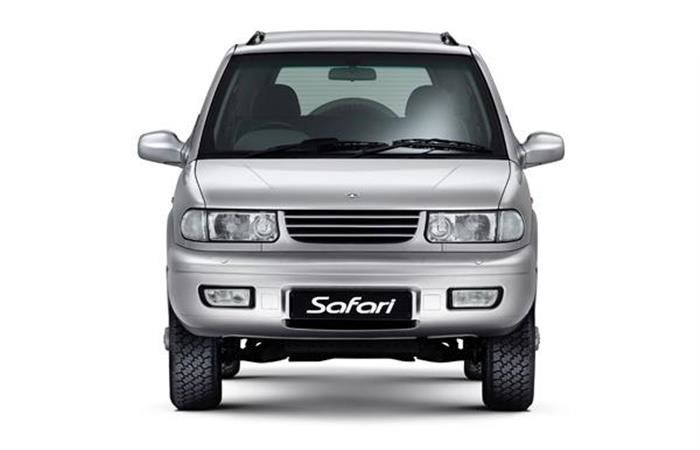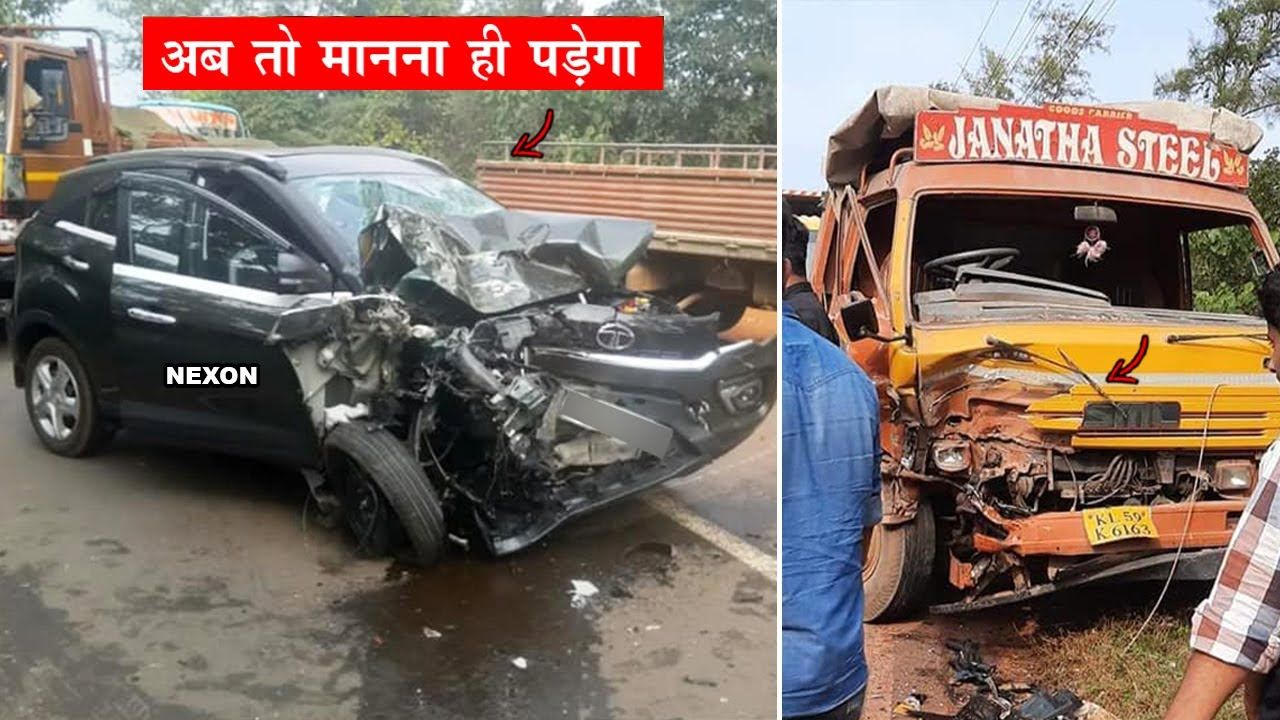Maruti Suzuki vs. Tata Motors: The Battle for Dominance
Published On 20/4/2024, 3:20:46 pm Author Nitesh YadavA clash of two titans for market share, fuel efficiency, and customer loyalty. Who will dominate the road ahead?

For years, the Indian automotive landscape followed a predictable pattern. Maruti Suzuki, the undisputed leader, cruised with its fuel-efficient hatchbacks and sedans, appealing to the value-conscious masses. Meanwhile, Tata Motors, known for its commercial vehicles, lingered in the shadows of the passenger car market burdened by a legacy of robust but unrefined offerings.
But a remarkable transformation has taken place. Tata Motors, through a commendable rebranding effort, has entered the scene, challenging Maruti's dominance with a powerful new image. Let's rewind and explore how this significant shift unfolded.
Tata Motors established itself on robust trucks and buses, gaining acclaim for reliability and strength. However, this strength-oriented approach extended to passenger cars, resulting in perceptions of bulkiness, boxiness, and a lack of finesse.
Tata and Maruti Suzuki from 1990s to 2015
Tata Motors' initial ventures into passenger cars, despite inheriting the robustness that defined their reputation in trucks and buses, faced an uphill battle in shedding the image of clunky practicality. In the 1990s, SUMO and Safari targeted the rugged SUV segment. While SUMO found niche success, especially with government and cab fleets, its rough ride and utilitarian interiors limited widespread appeal. The once well-perceived Safari faced a challenge with the arrival of its rival, Scorpio.

The Indica, Tata's 1999 debut in small passenger vehicles, failed to dispel the "commercial vehicle" aura with its boxy design and dated interiors. The 2004 follow-up, Indigo, aimed for modernity with a sedan-like shape but struggled with reliability issues. The persistent challenge was the brand perception, as Tata's association with commercial vehicles overshadowed their attempts at private passenger cars. Despite efforts with Vista and Manza in 2009 and 2010, showcasing modern design and improved features, the "taxi car" image persisted.
Meanwhile, Maruti Suzuki thrived as an undisputed leader. The Maruti 800, a cultural revolution since 1983, symbolized reliability, low maintenance, and phenomenal service. The Zen, launched in 1998, marked a departure from the utilitarian 800, retaining Maruti's DNA of fuel efficiency, affordability, and robust service. The Alto's arrival in 2000 further solidified Maruti's dominance in the city streets, becoming the perfect first car for young drivers and families. Maruti's success lay in a formula of fuel efficiency, an extensive service network, and decades of trust in understanding the needs of the Indian market.
While affordability always played a key role, Maruti's trump cards were fuel efficiency and low maintenance. The Alto and WagonR, champions of these virtues, became the perfect entry point for first-time car buyers and budget-conscious families. They redefined mobility, making car ownership attainable for millions.

In 2010, Tata's Aria aimed to rival Toyota's Innova in the MPV segment. Despite initial attention to spacious interiors and competitive pricing, inconsistent quality and outdated design led to declining sales. The rebranded Hexa in 2017 struggled to revive its fortunes, showcasing the ongoing challenges in Tata Motors' quest for a significant presence in the passenger car market.
The emergence of the Compact SUV trend and rebooting of the Automotive Market
In 2013, the Ford Ecosport burst onto the Indian stage, not merely as a compact SUV but as a true game-changer. Its dynamic design, rich features, and competitive pricing not only redefined the segment but also ignited an SUV revolution. Once dominant, sedans found themselves overshadowed as drivers yearned for the elevated perspective and rugged allure of their more compact, sportier counterparts. This shift prompted carmakers to adapt swiftly, entering a phase reminiscent of a near-reboot.
Hyundai's Creta emerged as a direct competitor to the Ecosport, while Renault's Duster and its Nissan counterpart, Terrano, aggressively entered the fray. Inspired by the Ecosport's triumph, Tata identified a blank canvas for its own SUV ambitions.
Nexon: Tata's Triumphant Shift from Showrooms to Safety Scores
Tata took the Indian car market by storm when they unveiled the Nexon, a compact SUV not just designed with flair by the kickass Designer Pratap Bose, but built with one crucial weapon: safety. It became the first Indian car to smash the Global NCAP test with a perfect 5-star rating, a monumental achievement for the nation. Nexon wasn't just a car; it was a safety shield. Social media erupted with real-life tales of Nexon owners emerging unscathed from devastating crashes. Videos showcased mangled trucks bearing the brunt of collisions while the Nexon stood proud, barely a scratch on its robust frame. These weren't just isolated incidents; they painted a powerful picture of a car that prioritized lives over sheet metal.

And just like that, the game changed. Ownership in India was no longer a mere status symbol. Safety became the driving force, the top priority. People demanded cars that wouldn't crumble at the slightest impact, cars that could be trusted to protect their families. Nexon didn't just redefine expectations; it ignited a revolution, pushing the entire industry towards a new era of safety-first thinking.
The Nexon's success wasn't just Tata's, it was India's. It proved that safety wasn't a luxury reserved for foreign brands; it could be made in India, for India. It instilled a sense of pride, a sense that Indian cars could, and would, stand shoulder-to-shoulder with the best in the world when it came to protecting lives. Nexon's story wasn't just about a car; it was about a shift, a collective awakening to the paramount importance of safety. It was a testament to the power of one bold move to ripple through an entire industry, changing not just what people drove, but why they drove it.
The Nexon wasn't just a game-changer, it was a culture-changer. It forced Maruti Suzuki, synonymous with Indian cars, into the uncomfortable limelight for allegedly prioritizing cost over safety in its budget-friendly offerings. Nexon's 5-star halo cast a harsh light on these practices, sparking crucial conversations about car safety standards in India.
But Tata didn't stop there. The Harrier, a sleek SUV built on the robust platform of Land Rover (owned by Tata Motors), arrived like an automotive knight in shining armor. Its premium design, reminiscent of its Land Rover lineage, and spacious interiors stole the hearts of Indian drivers yearning for a taste of luxury and performance. Harrier proved that Tata could not only build safe cars but also cars that could compete with global giants in the style and comfort department.
With Nexon's safety torch and Harrier's stylish swagger, Tata shed its "truck maker" skin and stepped onto the mainstage as a serious contender in the passenger car market. They transformed their image from workhorses to innovators, safety advocates, and purveyors of sophisticated driving experiences.
This metamorphosis wasn't just about branding or clever marketing. It was a result of a conscious shift in priorities, a commitment to putting safety first and offering premium experiences without compromising affordability. Nexon and Harrier stand as testaments to this shift, milestones in Tata's journey from trucks to titans of the Indian car industry.
Tata's Passenger Vehicle Sales: A Transformation Story
Tata's journey in the passenger vehicle market has been one of remarkable transformation. Gone are the days of primarily being recognized as a truck maker; Tata has now established itself as a serious contender, challenging established players with its focus on safety, design, and affordability.
Tata's rapid ascent has narrowed the gap with giants like Hyundai and Mahindra, and they are actively vying for Maruti Suzuki's top spot.
While Tata's rise in the safety domain has been phenomenal, it's important to acknowledge that Maruti Suzuki, the market leader, isn't sitting idle. Recognizing the growing importance of safety for Indian consumers, Maruti has also started a crucial journey of reinvention.
Here's how they're playing the new game:
Taking Safety Seriously
Maruti no longer views safety as an afterthought. The 4-star NCAP rating of Vitara Brezza was a significant step, and the already launched Fronx and Grand Vitara promise to further solidify their commitment to robust build quality and advanced safety features. These new models aim to shatter the "flimsy Suzuki" myth that once dogged the brand.
Fuel Efficiency & Safety Balance
Maruti understands the Indian market's sensitivity to fuel costs. To address the potential decrease in mileage due to safety enhancements, they're actively pushing their smart hybrid technology. This tech aims to balance safety with the brand's core strengths of fuel efficiency and low maintenance. By bridging this gap, Maruti can offer safety-conscious buyers a compelling package without compromising on their traditional priorities.
It's still early to declare a winner in this safety race, but what's clear is that both Maruti and Tata are raising the bar. This healthy competition ultimately benefits the Indian consumer, who now has a wider range of safe and reliable car options to choose from.
However, the challenges remain. Maruti needs to ensure consistent implementation of safety features across their entire model range, not just in flagships. Additionally, bridging the gap between NCAP ratings and real-world crash performance still requires ongoing efforts.
















